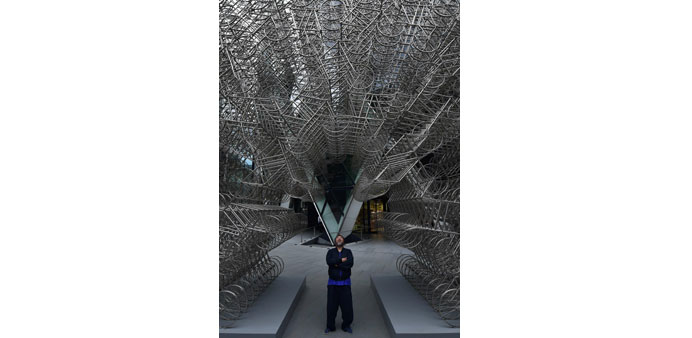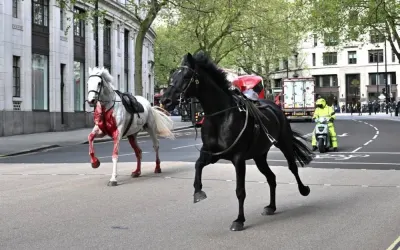AFP/London
A major retrospective of the work of Chinese dissident artist Ai Weiwei opens at London’s Royal Academy of Arts on Saturday, exploring his subversive exploration of human rights abuses.
The London exhibition is a landmark for the artist as it is the first in five years which he could personally supervise after having recovered his passport, confiscated by Chinese authorities in July 2011.
“He said that the emotional impact of coming to London to see the show is extraordinary,” said RA artistic director Tim Marlow.
The last public exhibition of his works that Ai Weiwei was able to attend was his “Sunflower Seeds” at the Tate Modern, between October 2010 and May 2011, Marlow said.
“It was then that he was incarcerated and that his passport was taken away.” The Chinese dissident is returning to the capital in anything but low-key style.
Visitors who pass the courtyard of the RA in central London will see his monumental sculpture “Tree”, eight large trees made from pieces of dead trees from southern China.
The work has been discussed as a symbol of China - a combination of different ethnic peoples brought together to form one nation.
The RA crowdfunded the money to bring the sculpture to London, raising £124,000 from 1,300 backers.
Inside the gallery, works by Ai Weiwei are displayed in 11 rooms, each with a theme organised by project, period of life or material used by the artist.
The largest section focuses on his work on the Sichuan earthquake of 2008, which killed tens of thousands of people.
Two enormous wall panels list the names of some 5,000 school children who died in the disaster due to poor building quality.
Another huge sculpture is “Straight”, an installation of 90 tonnes of steel rods which were straightened by hand after being mangled in the quake.
The work drew increased scrutiny from the Chinese government, who Ai Weiwei suspects of holding back information on deaths in the disaster.



